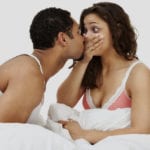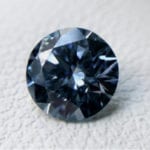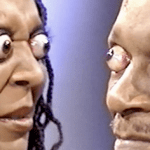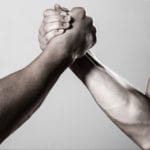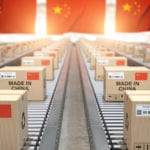 Music
Music  Music
Music  History
History 10 Less Than Jolly Events That Occurred on December 25
 Weird Stuff
Weird Stuff 10 Funny Ways That Researchers Overthink Christmas
 Politics
Politics 10 Political Scandals That Sent Crowds Into the Streets
 Weird Stuff
Weird Stuff Ten Bizarre Facts About The Doge Meme
 Our World
Our World 10 Ways Your Christmas Tree Is More Lit Than You Think
 Movies and TV
Movies and TV The 10 Coolest Stars to Set Sail on The Love Boat
 History
History 10 Things You Didn’t Know About the American National Anthem
 Technology
Technology Top 10 Everyday Tech Buzzwords That Hide a Darker Past
 Humans
Humans 10 Everyday Human Behaviors That Are Actually Survival Instincts
 Music
Music 10 Surprising Origin Stories of Your Favorite Holiday Songs
 History
History 10 Less Than Jolly Events That Occurred on December 25
 Weird Stuff
Weird Stuff 10 Funny Ways That Researchers Overthink Christmas
Who's Behind Listverse?

Jamie Frater
Head Editor
Jamie founded Listverse due to an insatiable desire to share fascinating, obscure, and bizarre facts. He has been a guest speaker on numerous national radio and television stations and is a five time published author.
More About Us Politics
Politics 10 Political Scandals That Sent Crowds Into the Streets
 Weird Stuff
Weird Stuff Ten Bizarre Facts About The Doge Meme
 Our World
Our World 10 Ways Your Christmas Tree Is More Lit Than You Think
 Movies and TV
Movies and TV The 10 Coolest Stars to Set Sail on The Love Boat
 History
History 10 Things You Didn’t Know About the American National Anthem
 Technology
Technology Top 10 Everyday Tech Buzzwords That Hide a Darker Past
 Humans
Humans 10 Everyday Human Behaviors That Are Actually Survival Instincts
10 Utterly Bizarre Body Parts From World Mythology
Mythology makes it clear that our ancestors had extremely active imaginations, extremely active drugs, or some combination of the two. They came up with a lot of odd looking entities, including multi-animal hybrids like the gryphon, and animal-human hybrids like the centaur or minotaur. Some of the oddest characters in world mythology were more subtle, set apart by just a single unusual body feature. Yet, as these examples make clear, more subtle in no way translates as less bizarre.
10 Lots Of Removable Eyes

Two figures on this list have given their names to medical conditions. One of these conditions is oedipism, which is an attempt to gouge out your own eyes. It’s a symptom of severe mental illness, and it gets its name from Oedipus. Oedipus also gave his name to Freud’s theory of the Oedipus complex, the idea that all boys want to have sex with their mother and kill their father (not necessarily at the same time).
Those two things are linked, in fact, as Oedipus gouged out his eyes with dress pins when he realized he’d accidentally married his mother. Another character from Greek myth to have had trouble with her eyes was Lamia, a human queen that slept with Zeus, then gave birth to several of his children. When Zeus’s wife Hera found out, she killed the children and cursed Lamia to always have her eyes open, so that she would forever see the children’s deaths. Zeus gave Lamia the ability to remove her eyeballs, so that she could make herself blind. She was able to put them back in again at any time.
The most unusual use for removable eyes comes from the myths of Hawaii. There are two versions of this particular story, but each features a married couple. The husband spends his day collecting nuts on the hills, while the wife fishes. Unbeknownst to her husband, the woman removes her eyeballs and casts them out as bait.
In a Maui version of the story, a seer tells the husband Kokole about his wife’s ocular angling technique. Kokole heads down to the sea, steals his wife’s eyes, and threatens to destroy them. She responds by eating one of their children, so Kokole flees with their other child and throws his wife (and the eyes) into a fire.
In an Oahu version of the tale, the husband merely hides the eyes, making his wife blind. Luckily, one of their six children sees this and helps the mother get her eyes back. It’s not entirely clear whether this is because the child is kind and doesn’t like seeing his mother permanently disabled, or whether it’s out of self-preservation because blind women tend to eat their children.
9 The Dai Tengu’s Big Noses

The tengu is a type of creature from Japanese folklore. Some tengu are depicted as crow-like, with feathers and beaks. However, the version we’re interested in here, the Dai Tengu, are small humanoids set apart by their really long noses. The noses never stop growing and can grow to a couple feet in their lifetimes.
The tengu live on mountains, and their noses are a prominent part of their daily lives. Tengu children use their noses to fence, though they wear masks to avoid damaging each other’s eyes with a misplaced poke. Painters and poets create their art by tying a brush to the end of their nose. If noses break, they have to be set with a splint. Older tengu test the strength of their noses by tying them together and having a youngster dance on them like a tightrope.
These long noses give the tengu an astonishing sense of smell. A 19th-century Japanese tobacco company used the name “Tengu,” playing on the quality of their tobacco—even the tengu liked the smell of it. The link also played on the tengu’s phallic implications. One of the company’s posters, pictured above, featured a naked woman looking in a mirror, while a tengu holding a packet of cigarettes pointed his nose at her.
8 Zahhak’s Troublesome Shoulders

The mythology of Persia tells of a prince named Zahhak who envied his father’s power and wanted the throne for himself. Iblis, the Islamic Devil, appeared to Zahhak in the form of an old man and suggested it would be a good idea for the prince to have his father assassinated.
Zahhak did this, and became king. Iblis planned to corrupt him further, and installed himself as a chef. Zahhak was a vegetarian, and Iblis wished to persuade him to eat meat. The devil-turned-chef began with dairy and eggs, and then went via poultry to end up feeding the new king some red meat. It seems that the Devil is a fantastic cook (he’s got all those open fires back home to practice with), and Zahhak gobbled the food readily. He offered the chef any reward he wanted.
“I wish only to be allowed to kiss your shoulders,” said the chef. Zahhak, assuming he’d gotten off lightly, agreed. Once the kisses were complete, Iblis disappeared, and two black snakes sprung from Zahhak’s shoulders. He tried to chop them off, but they regrew, and the royal physicians were unable to do anything about them.
Iblis came back, this time disguised as a doctor. He told Zahhak that the only way to stop the snakes from feasting on his own body was to keep them fed with human brains. The king then ordered two young men brought to him each day and killed to feed the snakes.
Zahhak eventually became the ruler of a neighboring kingdom. Two chefs there conspired to save lives by only slaughtering one of the young men each day. In place of the other man’s brains, they put those of sheep and goats. They saved 200 lives in total, and these survivors went on to be the fathers of the Kurdish people.
7 Faumea’s Deadly Vagina

Many myths tell of vaginas with teeth, a condition called vagina dentata. There’s been plenty of discussion about the symbolism of these stories, and also plenty of pictures that are interesting indeed. Yet one woman from Hawaiian mythology took extreme gynecology to a whole new level. There is no subtle way to introduce the thing that made Faumea famous, so we’ll just say it: Man-killing eels lived in her vagina.
One day, Faumea met the god of the sea, Tangaroa. The two of them wished to mate, but Tangaroa had reservations because of the whole “my penis will be eaten and I will die” thing. Faumea taught him how to lure out the eels. The method itself seems to be lost to time, so you ‘ll have to use your imagination.
The couple had two sons. One married a woman named Hina-a-rauriki, but she was captured by an octopus demon. Having mastered the art of luring sea creatures to where he wanted them, Tangaroa caught the octopus and drew it to the surface. The sea god hacked the octopus demon to pieces, and his daughter-in-law emerged, alive but covered in slime. That doesn’t sound pleasant, but we’re pretty sure his disgust reflex was long gone by that point.
6 Old Man And His Anus

Old Man, also known as Trickster, is a figure from the mythology of Blackfoot Indians. One day, he was wandering and came across a bunch of squirrels playing a game. The squirrels would take turns covering each other in hot ashes, only pulling each other out when the heat became unbearable. Old Man asked if he could join in, saying he’d covered them all up together until they got too hot. They agreed. A short while later, having ignored the screams and begging, Old Man began filling himself with freshly roasted squirrel meat.
He couldn’t finish the whole meal, so he put some aside for breakfast. He then asked his anus to keep watch and wake him if anything approached to try to steal the meat. Every time a small creature came by, the anus made a huge noise, waking Old Man. Eventually, he grew so tired that he slept through a warning from his anus. A passing lynx ate the leftover squirrel meat.
Come morning, Old Man wasn’t pleased. He found the lynx and tried to tear it in half. This didn’t work, so he bashed its face on a rock instead. That’s why lynxes have flat noses. Also, he stuck his pubic hair on the cat’s face, and that’s why they have whiskers. Then Old Man turned his attention to his own anus, which had let him down by not waking him up. Old Man set a stick on fire and used it to poke his anus as a punishment. This hurt Old Man, which he’d apparently not anticipated.
To ease his discomfort, Old Man lay down at the top of a hill, his anus exposed, and called for the wind to blow into it to cool it. The relief wasn’t enough, and Old Man made the wind stronger and stronger until it lifted him into the air and sent him flying into a tree. This made him angry with the tree, so he attacked it with a knife.
Other tribes’ versions of the story say the anus protected roast duck or roast turtles, rather than squirrels. In the duck version, the Trickster tries to repair his anus after he burns it, but the skin won’t go together smoothly. That’s why we all have wrinkled anuses to this day.
5 Priapus’s Penis

Priapus is the other god on this list who lent his name to a medical condition. Priapism is an erection that simply won’t go down. Before anyone is tempted to joke (probably ending suggestively with “ladies“), note that one of the complications of a persistent erection is that the relevant part becomes gangrenous, turns black, and falls off.
Luckily for Priapus, gods are immune to such complications, because he was in a state of arousal his entire life. Depending on the depiction, his phallus was anywhere from one to several feet in length. He was proud of it, and he really liked to show it off.
His justification for this is outlined in a poem, part of a collection about Priapus compiled in the 15th century. He points out that none of the other gods hide their signs of power—Zeus is always showing off his lightning bolts, and you don’t see Poseidon sheathing his trident. So it is for Priapus, who concludes, “lacking my missile’s defense, I shall be wholly unarm’d.”
This pride led Priapus into an argument with a talking donkey about who had the most substantial endowment. It turned out it was the donkey, so Priapus killed the animal, and donkey sacrifices in his honor became the norm. An alternative version of the story is that Priapus was trying to rape the virgin goddess Hestia in her sleep (she was his great-aunt, if you’d like an extra layer of awful). A donkey woke her up while Priapus was approaching on tiptoe, and so he murdered the ass in revenge.
While that may seem harsh (and it is), it’s not surprising that Priapus had issues. He was abandoned by his mother Aphrodite as a baby because of his affliction. In some stories, his huge penis was a curse from queen-of-the-gods Hera, who didn’t like Aphrodite much. That’s the same Hera who removed Lamia’s eyelids, because physically deforming innocents was apparently her preferred revenge method.
4 King Midas’s Donkey Ears

King Midas is famous for the curse that turned everything he touched into gold, spawning the phrase “the Midas touch.” But the man’s troubles didn’t end once he’d rid himself of that problem.
He began to worship Pan, a woodland god that took the form of a satyr. That’s how he ended up being part of the audience for a music contest between Pan and Apollo. A mountain god named Timolus was the judge, and he declared Apollo the winner.
Midas disagreed with the decision, which was his right. Music’s a very subjective thing, after all. Then he said as much out loud, which was also his right but was extremely idiotic. Apollo turned to Midas and said, “You will have ears to match the mind you have in judging,” turning Midas’s ears into those of a donkey. While many might wear the ears with pride—“yeah, I got these when I told a god what I thought of his lame music”—Midas chose to hide them under a purple turban.
One day, a while later, Midas needed a haircut. He got one of his servants to do the job, and the fellow noticed the king’s ears. While the barber couldn’t bring himself to say anything directly, he also had great trouble keeping the secret to himself. The tortured young man dug a hole outside, whispered into it about how Midas had the ears of an ass, then covered it up. After that, a bunch of reeds grew on the spot. When the wind blew through them, they whispered about the knowledge that the ground (or possibly a gossipy earthworm) had passed on to them.
3 The Sciapodes’ Giant Feet
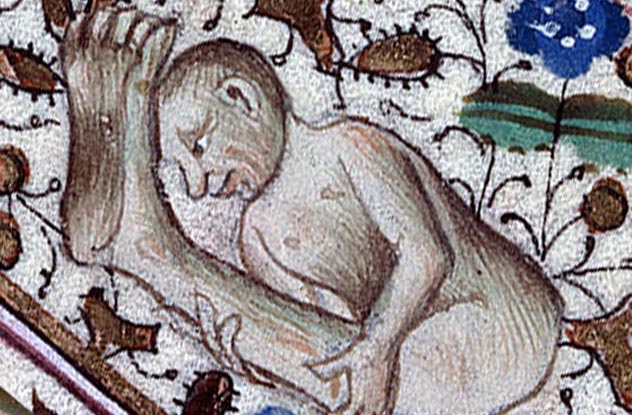
You don’t need to go overboard to create a memorable race of fantastical creatures. A slight alteration will do. Dwarves are short. Hobbits are . . . also short. Elves have pointy ears. Gnomes are short and have pointy ears. The Cyclops is an example of a simple change that’s less overdone—take a body part of which we normally have two, and then just stick one in the middle instead. If you replace the eye of the Cyclops in that method with a foot, then you get the race known as sciapodes.
These people are said to have lived near Ethiopia. They’re shown with a single giant foot on the bottom of a single leg, and they hop around with surprising speed. When it’s sunny, they lie on their back and put their foot up in the air to act as a parasol. Sciapodes literally means “shadow-foots.”
They were quite a popular figure of art in centuries past, but the artists of yesteryear seem to have had a very pessimistic outlook on the hopping and sunbathing lifestyle. Every single picture, whether painted, printed, or carved in stone, whether the Sciapodes are alone or in company, shows them staring at their foot with emotions that are somewhere between bitter and sad. While it’s difficult to be certain exactly what’s playing on their minds, a good bet is that they’re just not looking forward to hopping with sunburnt toes.
2 Nuada Airgetlam’s Silver Arm
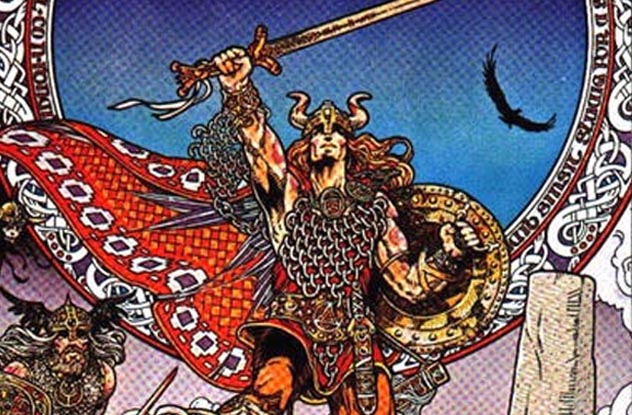
Legend tells of Nuada Airgetlam, King of Tuatha De Danann, who lost his arm in the First Battle of Mag Tuired against the Fir Bolg. While that sounds like the synopsis of the fantasy novel you started writing just after you saw Lord of the Rings, it’s actually a story from Irish mythology. Unfortunately for the mythical King Nuada, this “blemish” of having only one arm meant he could no longer be king, because civil rights hadn’t been invented yet.
Luckily, Nuada had contacts. The Dian Cecht, doctor to the gods, fashioned an arm from silver that functioned exactly like the real thing. Despite being a magical cyborg, Nuada still wasn’t allowed to get his throne back, because recognizing awesomeness hadn’t been invented yet either. The Dian Cecht eventually figured out how to create a replacement arm from flesh-and-blood, and Nuada regained his kingdom.
1 Artemis’s Ambiguous Breasts

Arnold Schwarzenegger’s 1990 action film Total Recall is an icon of cheesy science fiction. When Hollywood remade it a couple of years ago, they ripped the plot apart completely and made a very different film. There was one character, however, that the producers were very keen to bring back—a mutant woman with three breasts. While it may seem that the movie industry is trying to saddle us with fetishes that defy biology, the Greeks and Romans had them beat by thousands of years, and also an order of magnitude on the breastiness scale.
Statues of the Greek fertility goddess Artemis, and her Roman equivalent Diana, depict up to thirty breasts in multiple sizes. If you take a look at the statues of the goddesses from around the first century, you’ll notice that the breast count is in the dozens, yet there’s an unnerving lack of nipples. Statues from around the Renaissance period added nipples, but reduced the number of breasts to single figures. They did make some of those nipples into fountains that shoot streams of water, though.
But why did the originals miss off these key bits of anatomy? In 1979, a classicist named Gerard Seitele suggested that they might not actually be breasts at all. He argued that they are probably bull testicles. One suggestion is that Artemis was originally depicted with typical human assets, but each year bulls were sacrificed at her temple in Ephesus—one of the original Seven Wonders of the Ancient World. The testicles were then hung around the statue, and later sculptors included them as part of their design.
You can contact Alan on Twitter or by email.


